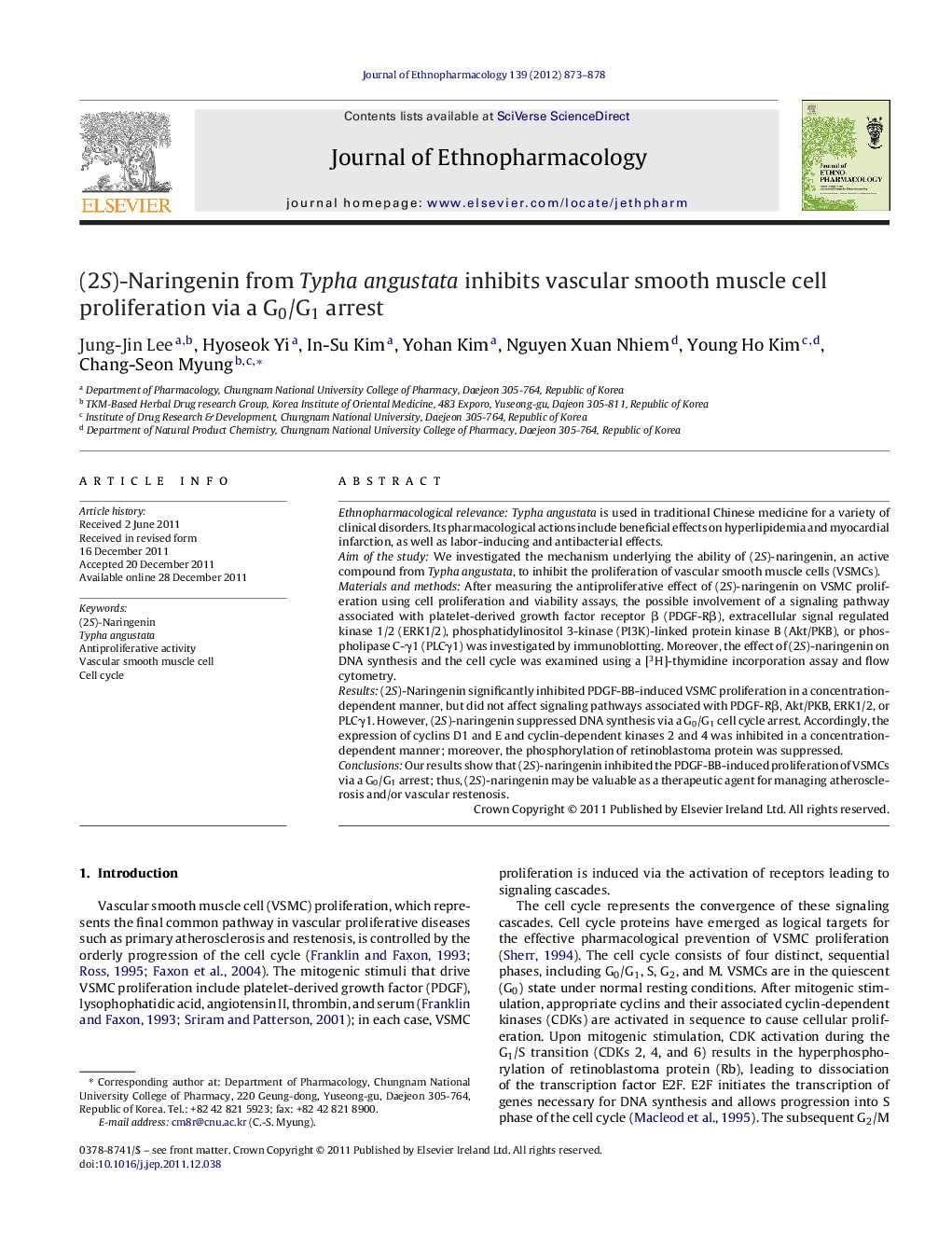| Article ID | Journal | Published Year | Pages | File Type |
|---|---|---|---|---|
| 5839651 | Journal of Ethnopharmacology | 2012 | 6 Pages |
Abstract
Ethnopharmacological relevanceTypha angustata is used in traditional Chinese medicine for a variety of clinical disorders. Its pharmacological actions include beneficial effects on hyperlipidemia and myocardial infarction, as well as labor-inducing and antibacterial effects.Aim of the studyWe investigated the mechanism underlying the ability of (2S)-naringenin, an active compound from Typha angustata, to inhibit the proliferation of vascular smooth muscle cells (VSMCs).Materials and methodsAfter measuring the antiproliferative effect of (2S)-naringenin on VSMC proliferation using cell proliferation and viability assays, the possible involvement of a signaling pathway associated with platelet-derived growth factor receptor β (PDGF-Rβ), extracellular signal regulated kinase 1/2 (ERK1/2), phosphatidylinositol 3-kinase (PI3K)-linked protein kinase B (Akt/PKB), or phospholipase C-γ1 (PLCγ1) was investigated by immunoblotting. Moreover, the effect of (2S)-naringenin on DNA synthesis and the cell cycle was examined using a [3H]-thymidine incorporation assay and flow cytometry.Results(2S)-Naringenin significantly inhibited PDGF-BB-induced VSMC proliferation in a concentration-dependent manner, but did not affect signaling pathways associated with PDGF-Rβ, Akt/PKB, ERK1/2, or PLCγ1. However, (2S)-naringenin suppressed DNA synthesis via a G0/G1 cell cycle arrest. Accordingly, the expression of cyclins D1 and E and cyclin-dependent kinases 2 and 4 was inhibited in a concentration-dependent manner; moreover, the phosphorylation of retinoblastoma protein was suppressed.ConclusionsOur results show that (2S)-naringenin inhibited the PDGF-BB-induced proliferation of VSMCs via a G0/G1 arrest; thus, (2S)-naringenin may be valuable as a therapeutic agent for managing atherosclerosis and/or vascular restenosis.
Related Topics
Health Sciences
Pharmacology, Toxicology and Pharmaceutical Science
Pharmacology
Authors
Jung-Jin Lee, Hyoseok Yi, In-Su Kim, Yohan Kim, Nguyen Xuan Nhiem, Young Ho Kim, Chang-Seon Myung,
